The Eurocom Sky X7C (Clevo P775TM1-G) Gaming Laptop Review: True Desktop Replacement
by Brett Howse on August 5, 2019 8:00 AM ESTWireless
Eurocom offers the Sky X7C with your choice of either the Intel Wireless-AC 9260, or the Killer Wireless-AC 1535, which is based on the Intel offering. Both offer similar performance, with the Killer adding in additional software features including the ability to team with the included Killer Ethernet for the Doubleshot Pro, if you want to prioritize your traffic across multiple connections. For this review, we opted for the base Intel 9260 solution.
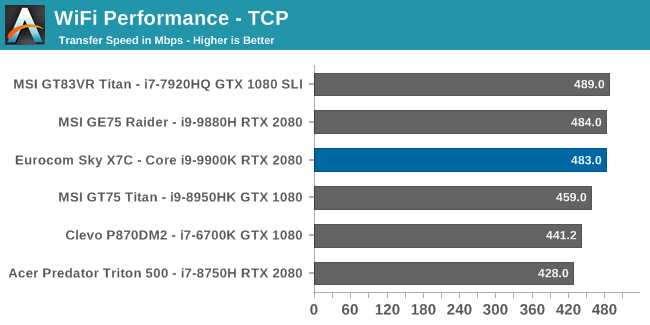
Performance was, as expected, excellent, and the 9260 continues to be the top wireless card of the current generation, with great performance, and a rock-solid connection. If you have a router with 160 Mhz channel support, performance would be even higher, since the connection speed would double from the normal 867 Mbps of a typical 2x2:2 802.11ac solution to 1.73 Gbps.
Audio
The included speakers are smartly arranged so that they project forwards and upwards from the rear of the notebook, and the speaker grilles are visible with the notebook open or closed, meaning the audio would still be the same if the notebook was being used closed while connected to an external display and keyboard. It’s a great design for this class of laptop, where that could easily be the use case.
Sound quality on the stereo Onkyo speakers is surprisingly good, with reasonable midrange and bass thanks to the 2.5W Subwoofer, with the caveat of course that all laptop speakers are poor compared to proper standalone models. The speakers reached 80 dB(A) measured one inch over the trackpad, with no clipping or distortion even at maximum volume.
The Sky X7C also features four 3.5 mm jacks, offering audio out, audio in, microphone in, and SPDIF. This is more common on the large form factor gaming laptops, where the additional audio inputs may be useful for streaming. The device leverages the SoundBlaster X-Pro Gaming sound card.
Thermals
Packing a desktop CPU into a notebook computer is not for the faint of heart, and cooling this, coupled with the RTX 2080 can be a challenge. With a combined power draw that can close in on 300 Watts even at stock frequencies, that’s a lot of heat to remove so proper cooling is important. Luckily, Clevo has been in the DTR game for some time and their chassis have proven themselves to be up to the task.
With a 1.6-inch thick notebook, there’s extra capacity for heatsinks, and although the Clevo based Eurocom Sky X7C is somewhat light for a Desktop Replacement, it’s still hefty at about 4 kg / 8.5 lbs. The extra size of a 17.3-inch notebook also provides room for larger fans to help move air without the fan noise becoming a jet-engine like pitch.
To see how the Sky X7C handles the load, the laptop was loaded up for an extended duration. As we’ve seen in past Clevo DTRs, they are designed to handle the load, and the X7C was able to cope without much difficulty. Over the duration, the GPU was pretty much rock-steady at 1650-1680 MHz, with a temperature right at 81°C. There was no degradation in frequency over time, nor did the temperatures continue to rise past that point.
The notebook was also run with a pure CPU stress test, and the results were astounding for a notebook. The CPU spikes to 157 Watts under max load before settling into a steady state of about 120 Watts, which is well above the rated TDP even at stock speeds – a trend that is common on high-core count Intel processors. Temperatures at max load were around 87° but once again were never trending up beyond that point, and the CPU was able to maintain between 4100 and 4200 MHz on all cores without throttling further. That level of performance is certainly a step above any of the typical 45-Watt processors in most gaming notebooks.
The downside of all of this power is of course noise, and the Eurocom Sky X7C reached around 60 dB(A) measured one inch over the trackpad after extended use. There is no throttling inside, but the acoustics are definitely on the noisy side. As a comparison, the last Clevo based DTR we tested was the P870DM2, and it only reached 49.5 dB(A) under load, although it weighs a whopping 50% more than this notebook. As is typical with gaming notebooks, a good set of closed back headphones are somewhat of a necessity. Luckily when not under load, the fan noise is almost completely silent, although the 780-Watt PSU fans are somewhat audible, adding to the total noise.
Software
As is typical of a gaming laptop, there’s included software to configure the settings under the hood, as well as the keyboard backlighting and macros. Since this is a Clevo based device, it comes with the Control Center software which provides quite a bit of functionality and monitoring capabilities.
You can adjust the CPU and GPU offsets from within Control Center if you’d like right from the main page. The CPU adjustments give quite a wide range of settings, from the Ratio override for each core, to allowing the Turbo settings to be configured along with the steady state power draw, which is by default set at 120 Watts, and lines up exactly with the power draw recorded during our CPU loads.
You can of course also adjust the fan profiles, and configure fan settings for different tasks, such as entertainment and performance.
The LED lighting settings are very basic, since this notebook only supports three RGB zones rather than per-key settings like some of the more expensive competition, but the macro settings are available as expected.
The functionality is all there for Control Center, but if it has one major downside, it’s the looks. The user experience isn’t great, and it’s not very clean looking software. As tends to be the case with everything about Clevo, it’s function over form.


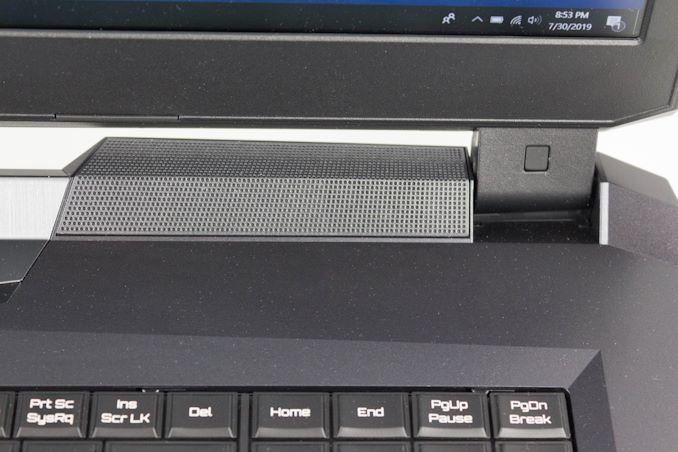
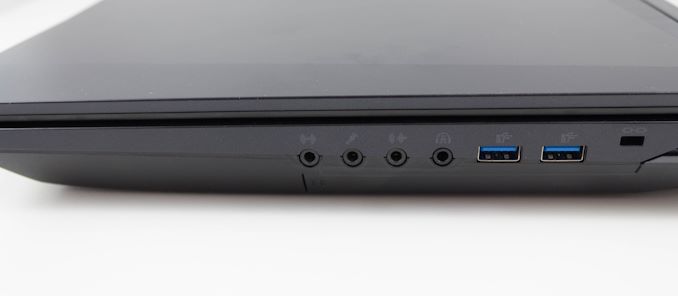
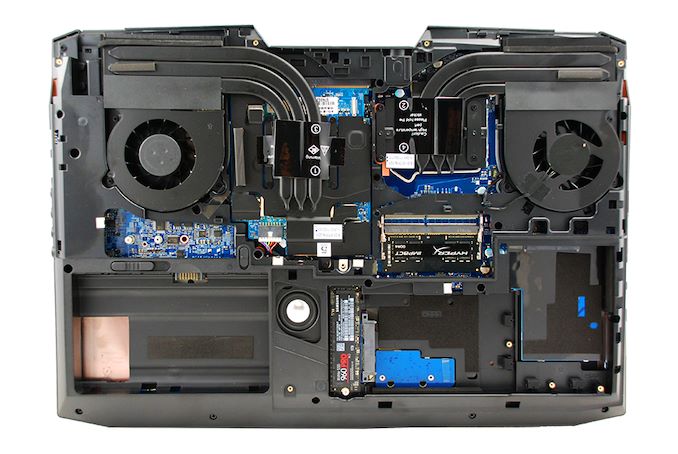
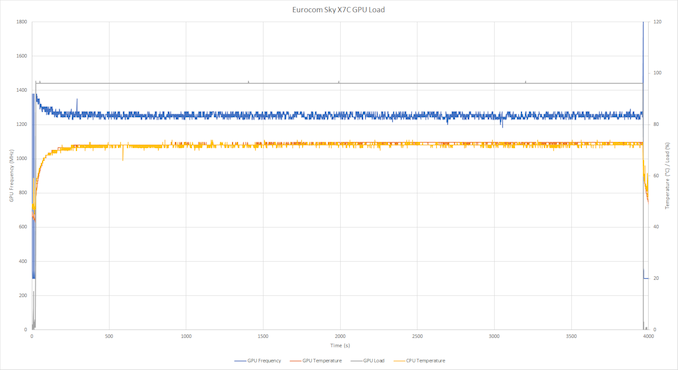

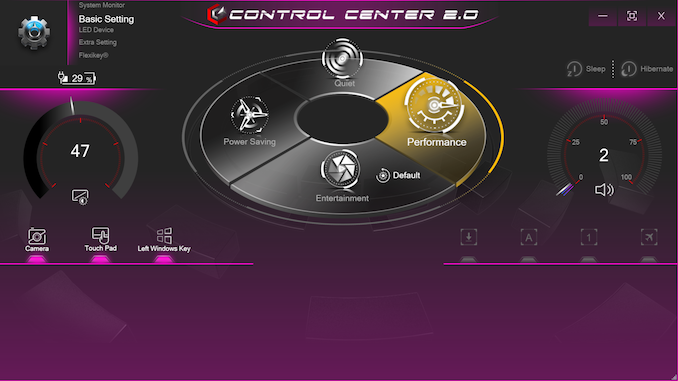
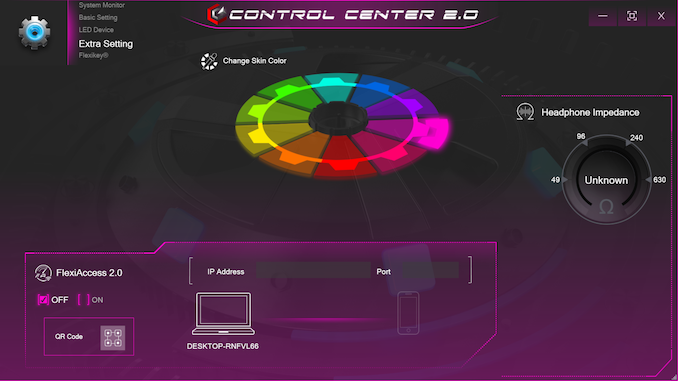








46 Comments
View All Comments
ballsystemlord - Tuesday, August 6, 2019 - link
Does not matter because, like Trump, no body will use the edit feature.ballsystemlord - Tuesday, August 6, 2019 - link
For the easily confused, that's a joke.AMD Die Hard - Monday, August 5, 2019 - link
I liked the write up about the laptop so much, that I went to Eurocom's website to configure one. I was blown away by how much money they are charging for a M.2 drive. The 1TB 860 EVO is $583 when newegg sells it for $153. That is just one example, all of the prices seem out of whack. I expect a slight price premium, but that seems extreme.close - Tuesday, August 6, 2019 - link
Configure the lowest spec chassis that can support your needs then buy your own RAM, storage, even CPU (although for this last one the cooling might have to be upgraded so a no-go).Psyrecx - Monday, August 5, 2019 - link
It's cute when noobies to technology think that Clevo and Eurocom just started doing this.Yeah, they didn't have Dual CPU, SLI laptops over a decade ago.
MaikelSZ - Monday, August 5, 2019 - link
check herehttps://www.notebookcheck.net/Eurocom-Sky-X7C-i9-9...
DanNeely - Monday, August 5, 2019 - link
It wasn't immediately obvious in the article, which 1080p option did Notebook Check get?MaikelSZ - Monday, August 5, 2019 - link
the IPSMaikelSZ - Monday, August 5, 2019 - link
Display: 17.3 inch 16:9, 1920 x 1080 pixel 127 PPI, AU Optronics B173HAN03.1, IPS, AUO319D, glossy: noMaikelSZ - Monday, August 5, 2019 - link
around 2009 - 2011 I had an Eurocom Phantom D900C, with a 4 core Xeon, 2 x 9800GTX M (SLI), 4GB and 3 x 320 GB HDD . Boy, o´ Boy!!